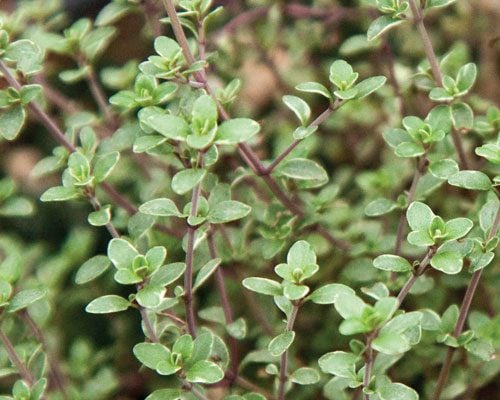
Learning Download: How to Grow Thyme
From Seed to Harvest: A beginner’s guide to growing thyme
Thyme is a smaller herb that grows upright on a woody stem and has needle-like leaves. It is most often used to flavor meats and vegetables. It is a perennials. Thyme does well when planted along walkways or in a container. Thyme will bloom tiny blossoms of pink, lavender or white throughout the spring and summer seasons which will attract bees to the garden.
To plant:
Thyme grows very slowly from seed and after planting, germination can take up to 28 days. Because of this, it is usually grown from divisions or cuttings. If planting from seed, begin thyme indoors and scatter the seeds on top of the soil and do not cover them or only cover them lightly.
To grow:
Once thyme reaches 3 inches in height, transplant it outdoors. Space the transplants 9 inches apart. Thyme grows best in full sun in soil with a pH of 7.0. Since it prefers slightly alkaline soil, add lime to the soil to raise the pH. Thyme also requires soil with good drainage to prevent root rot, so plant it in a sandy, dry soil. Prune thyme flowers as they appear as this encourages more leaf growth. Flowers can be used aromatically or added to teas.
If growing thyme in containers, repot the thyme every season, as its roots may begin to grow out the bottom of the container.
Thyme doesn’t require much care other than general pruning. Each spring, cut thyme plants back to half of its growth, as this encourages the plant to retain tender stems and a bushy appearance. Start over with each plant after four years of growth, as it will begin to become woodier during that time. Thyme can withstand winter and come back in the spring, but in colder climates add pine boughs or a heavy layer of mulch over the thyme to protect it from the cold.
To harvest:
Harvest thyme before its flowers open. Harvest by cutting the plant 2 inches from the ground. After the first cut is made, more growth will begin to develop but do not harvest this second growth as the new growth increases the plant’s hardiness over the winter months. Stop harvest a month before the first fall frost to ensure the plants are strong enough for the winter. After harvesting, lay the thyme in single layers on newspaper in the shade. Once dry, rub the leaves and they will separate easily from the stems.
What thyme craves:
Upon planting, add a continuous-release fertilizer to the soil. Add the fertilizer again each spring. Other fertilization options include fertilizing thyme with fish emulsion or liquid seaweed every two weeks but dilute the fertilizer by half.
Where to buy thyme seeds:
You can find many different varieties of thyme seed at Urban Farmer.

